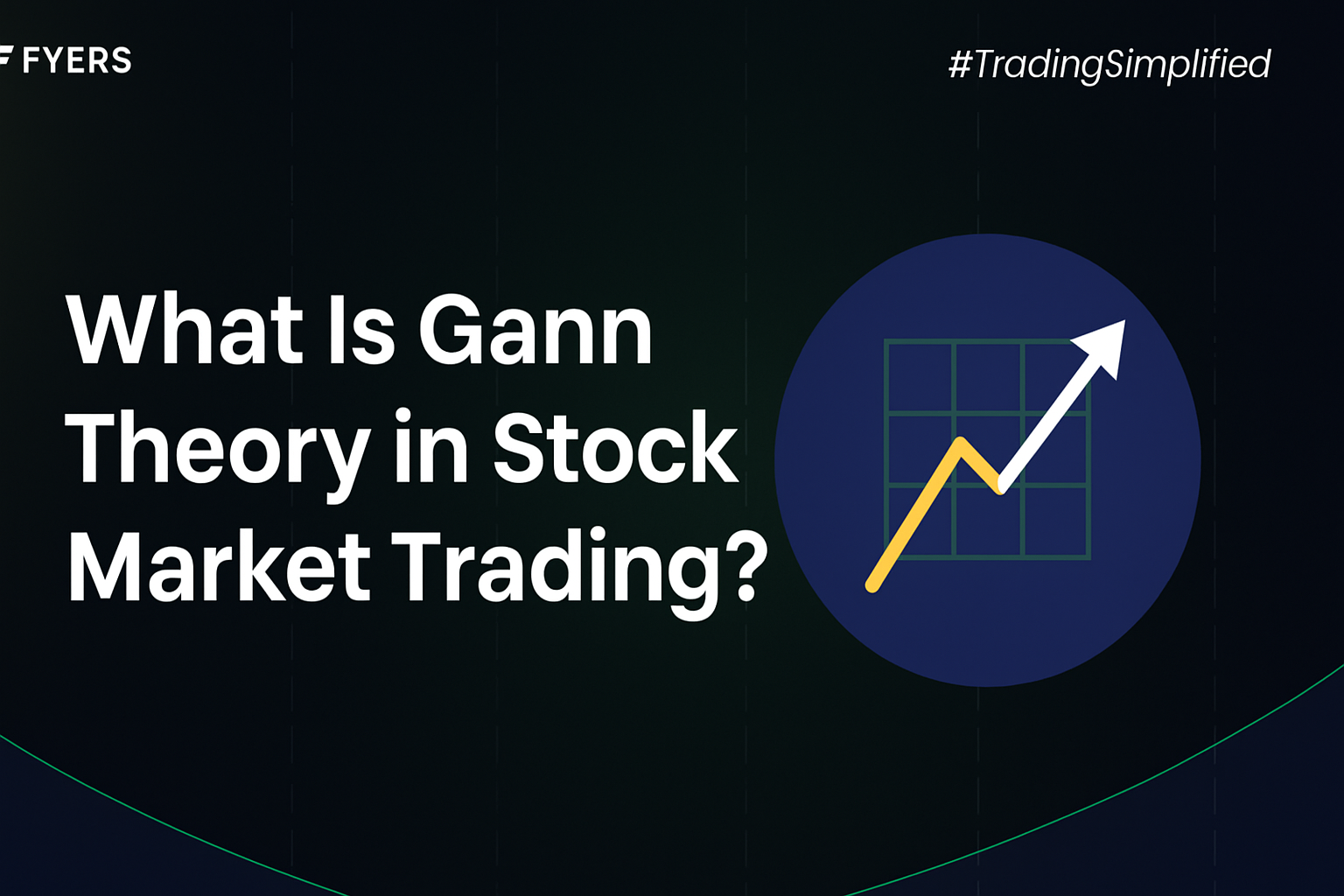

 31 Aug, 2025
31 Aug, 2025
 4 mins read
4 mins read

Technical analysis in the stock market is filled with different methods and tools that traders use to forecast price movements. Among these, Gann Theory is considered one of the most fascinating and complex approaches. Developed by W.D. Gann in the early 20th century, it focuses on the relationship between price, time, and patterns. Many traders still use aspects of his techniques today to identify key price levels and turning points.
In this article, we will explore what is Gann Theory, how Gann Angles are applied, the role of Gann Analysis, and how traders design a Gann trading strategy to gain insights into market behaviour.
At its core, Gann Theory is based on the belief that stock prices move in predictable geometric and cyclical patterns. Gann argued that both time and price are equally important, and that understanding their relationship can help predict future market moves.
In simple words, the theory suggests that price movements are not random; instead, they follow natural laws of mathematics and geometry. This is why Gann Theory in stock market trading remains popular among advanced traders who want to combine price charts with time-based forecasting.
Gann Theory rests on three main principles:
Price, Time, and Range – Markets move in proportionate relationships between price levels, time cycles, and ranges.
Geometric Angles – Angles drawn from significant highs or lows can indicate future resistance or support.
Market Cycles – Price behaviour often repeats based on historical cycles of time.
These principles form the foundation for Gann Analysis used in modern trading.
One of the most well-known aspects of Gann Theory is Gann Angles. These are diagonal lines drawn on price charts that represent the relationship between price and time.
The most important angle is the 1x1 angle (45-degree line), which means one unit of price moves in one unit of time.
Angles above the 1x1 represent stronger price trends, while angles below indicate weaker momentum.
For example, when the price respects a Gann Angle as support or resistance, traders use it to predict whether the trend will continue or reverse.
In practice, Gann Analysis involves plotting Gann Angles, identifying geometric patterns, and studying time cycles. Traders apply this to forecast:
Future resistance and support zones
Likely trend reversals
Key dates when significant market moves may occur
While this method requires precision, many experienced traders use it to align their trading strategies with time-tested cycles.
A Gann trading strategy often combines angles, retracement levels, and time cycles. Traders typically use it for:
Identifying Entry and Exit Points – Gann Angles help decide the right price levels.
Confirming Trends – If price respects a Gann Angle, it validates the strength of the trend.
Spotting Reversals – When price breaks a key Gann Angle, it signals a possible shift.
Traders usually blend Gann techniques with other technical tools like moving averages, Fibonacci retracements, or candlestick patterns to reduce risk.
Time and Price Integration – Unlike most tools that focus only on price, Gann Theory incorporates time cycles.
Forecasting Potential – It helps predict future turning points with greater accuracy.
Flexibility applies across stocks, commodities, and indices.
This is why many advanced traders value Gann Analysis in building reliable trading plans.
Despite its appeal, Gann Theory has several limitations:
Complexity – Requires detailed calculations and charting skills.
Subjectivity – Different traders may draw angles differently, leading to inconsistent results.
No theory guarantees accuracy, and external factors can influence markets.
Hence, most traders use Gann as a supporting method rather than the only strategy.
Gann Theory vs Other Technical Analysis Methods
Versus Fibonacci Analysis – Both deal with price retracements, but Gann adds the element of time cycles.
Versus Moving Averages – Moving averages follow price trends, while Gann attempts to forecast them.
Versus Trendlines – Gann Angles exhibit geometric and time-sensitive properties, while trendlines rely on visual highs and lows for their construction.
This makes Gann Theory in stock market trading unique but also challenging to master.
Gann Theory continues to hold a place in technical analysis because of its unique approach to combining price and time. While it requires effort and practice to apply effectively, many traders use Gann Angles, Gann Analysis, and structured Gann trading strategies to improve their market timing.
For those asking what is Gann Theory in stock trading, the answer lies in its blend of mathematics, geometry, and market psychology. When you use it wisely, it can offer valuable insights, though you should always balance it with other tools for accuracy.
Gann Theory is a trading method that studies the relationship between price and time using geometric angles and cycles.
They are diagonal lines drawn on charts that show how price moves in relation to time. The 1x1 angle (45°) is the most important.
Traders use Gann Analysis to identify support, resistance, and possible trend reversal dates by combining angles with time cycles.
It is a trading approach that applies Gann Angles, retracements, and cycles to decide entry and exit points in the stock market.
Calculate your Net P&L after deducting all the charges like Tax, Brokerage, etc.
Find your required margin.
Calculate the average price you paid for a stock and determine your total cost.
Estimate your investment growth. Calculate potential returns on one-time investments.
Forecast your investment returns. Understand potential growth with regular contributions.